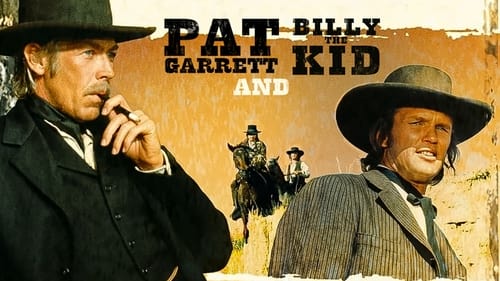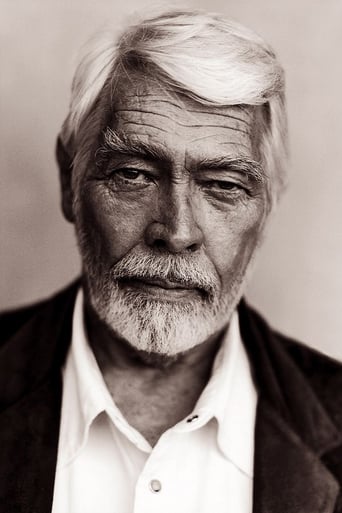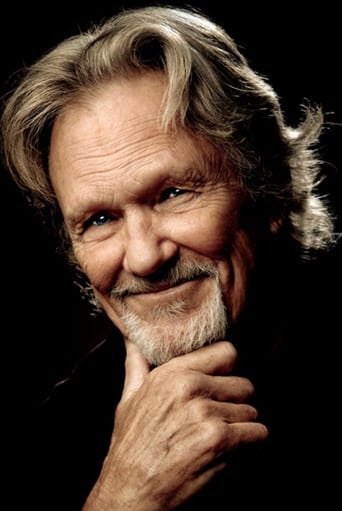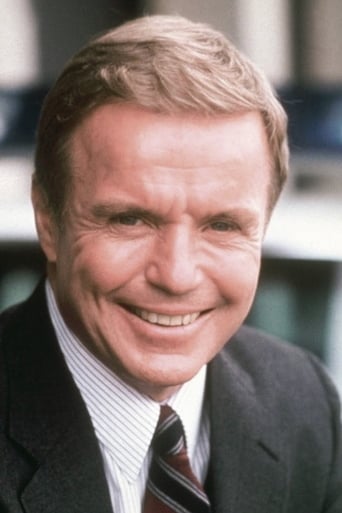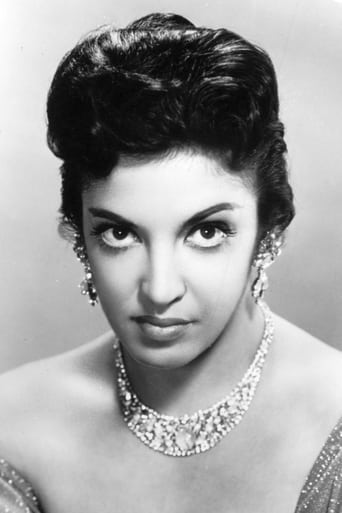Pacionsbo
Absolutely Fantastic
InformationRap
This is one of the few movies I've ever seen where the whole audience broke into spontaneous, loud applause a third of the way in.
Erica Derrick
By the time the dramatic fireworks start popping off, each one feels earned.
Mathilde the Guild
Although I seem to have had higher expectations than I thought, the movie is super entertaining.
tomsview
Sam Peckinpah's "Pat Garrett and Billy the Kid" has much in common with "One-Eyed Jacks"; Marlon Brando's take on the Billy the Kid story, which was based on Charles Neider's novel, "The Authentic Death of Hendry Jones". Although Neider's book, ridiculously renamed "Guns Up" in a Pan paperback edition (the one I read), is a fictionalised account, it is an unforgettable masterpiece, invoking a unique sense of nostalgia for the Old West. Peckinpah loved the book and was inspired to write what turned out to be the first screenplay for "One-Eyed Jacks", later made by Marlin Brando who changed just about every element. Although Peckinpah dropped out of that project early, when he finally got a chance to make his version, he moved a long way from Neider's book. In fact, the script moved closer to the historical record. However, although Neider's book is not credited, it's obvious that Peckinpah tried to capture its spirit. The story tells how Pat Garrett and Billy the Kid once rode together, but eventually found themselves on opposites sides of the law. When Billy brutally escapes from jail, in one of the film's best sequences, it sets in motion a ruthless hunt by Pat Garrett, which can only have one ending.Peckinpah actually frames the film with the death of Garrett. This sequence along with others have the trademark Peckinpah slow motion deaths with arching blood spray - techniques that had already become a little hackneyed even by 1973.However, the central problem was in Peckinpah's casting of Kris Kristofferson. Not so much, as many reviewers have suggested, that at 37 he was too old to play Billy the Kid, but more because he just didn't project the necessary sense of danger; he comes across as too affable, too laid back. Brando in "One Eyed Jacks" gave a stunning performance as a man with a dangerous edge, and although it might seem unfair to compare the two, that lack of threat is a key weakness in Peckinpah's film.Bob Dylan is in the movie and also provides a couple of very nasally songs on the soundtrack; his presence isn't just anachronistic, it's bizarre.On the other hand, James Coburn is just about perfect as Pat Garrett, and the rest of the cast is probably the greatest coming together of iconic stars from western movies ever - Chill Wills, Slim Pickens, Jack Elam, LQ Jones, Katy Jurado, Gene Evans, Paul Fix and others - one of the joys of the film is in spotting them.Apparently the film was badly cut by the studio. Despite that, and some strange decisions by Peckinpah himself, the film is nothing less than interesting. But because of all the tampering, like Brando's film, it misses out on greatness. As for Neider's book, it still awaits the right filmmaker to give it the definitive treatment on the screen.
justincward
A zapata western fantasy based on how Pat Garrett hunted his old compadre William Bonnie down. James Coburn and Kris Kristofferson are great, and the movie is a sumptuous vision of the wild west. There's a problem with the structure, though: as Garrett follows Billy the Kid down to Mexico, they run into new character after new character, and like as not shoot one or all of them. Before long, you lose track of who's who among the cameos by old-school Western standbys like Slim Pickens, Chill Wills and Jack Elam. The atmosphere keeps you watching though.The superfluous character problem is epitomised by Bob Dylan's 'Alias', a knife-throwing geek who works at the barber's. There is absolutely no point to the character; he doesn't do much, he doesn't want anything, and every time he appears on the screen you know it isn't going to lead anywhere - which may have been the point, but that's for a different movie. Maybe Bob's acting might have been better with more character motivation - as it is, he coquettishly flutters his eyelashes at Billy the Kid in a way that suggests plot developments more appropriate to Brokeback Mountain.The music consists of Bob's Nashville sound, which I like, but I'm not sure it works when it just comes out of nowhere in the quiet bits of the movie. 'Alias' might have worked better as a travelling troubador, but I suppose that was considered too obvious.Somewhere in PGABTK there's a great modern western struggling to survive but Peckinpah didn't keep it simple enough.
oldblackandwhite
In a decade when grown white men wore Afros, purple bell-bottom trousers, and beads, women opened conversations with "What's your sign, Man?", and decor was dominated by dark, faux wood grain on every surface, even phonographs and air conditioners, would you really expect the public to have good taste in movies? They didn't, as Pat Garret And Billy The Kid, directed by the grossly over-rated Sam Peckinpah, demonstrates. Too much profanity, too much posturing, too much gratuitous nudity, too much violence, too much socio-political drum beating, too many shots of the sunset, just too aimless and slow moving. Too little character development, too little story, too little discipline of the director. A general mess, saved only by good cinematography and a good performance by leading man James Coburn. And what I hate to tell you, if you're new to watching movies from the 'seventies, is that it was one of the better ones of that dreary era.With all the characters this ambling picture had, any depth of character development would have been neigh impossible, unless it was twice as long as the 122 minutes of the so-called director's cut. It may be that this bloated oat-burner has more characters than War And Peace. And what a waste of a sterling cast of old Western-identified character actors, including Slim Pickens, Chill Wills, R. G. Amstrong, Jack Elam, Paul Fix, and Katy Jurado. Most of these fine players are given only a few minutes or even a few seconds of screen time before being shot down or simply forgotten. Far too much time is given to Kris Kristofferson, as Billy the Kid, and Bob Dylan, as his nameless and useless-to-the-plot pal. Some people obviously liked their singing, but neither could out-act a wooden cigar store Indian with a microphone implant. Another singer who should have stuck to the disks and stayed off the film was Rita Coolidge, as Billy's main squeeze. As much of an empty envelope as Kristofferson, but at least she has few lines with which to be boring.If you are the decadent type who likes looking at nude babes in movies, this picture, like most 'seventies flicks, will give them to you. This was the first generation to give in to voyeurism. But I must warn you that most of the average to homely dames they rounded up to take 'em off in this turkey aren't much worth looking at -- though the "some kind of an octoroon from Texas" (as described by her pimp) wasn't bad. For Pete's sake, if you're going to make a point of having women take their laundry off in a movie, at least get some that look good in the buff! Forty-nine year-old Katy Jurado, even in a floppy cowboy hat, was the best-looking female in the picture. Though be assured she stayed dressed. Only the hat came off.To yours truly Bob Dylan's country-rock music and singing, passed off as the score, is simply grating. This dull hay-burner could have been considerably improved by a rousing, old time, grand operatic score, folded into the editing in a way to enhance the dramatic and psychological impact. Such as Dimitri Tiomkin or Max Steiner could churn out in Hollywood's Golden Era. But those balmy days were gone by 1973. The lack of movie-makers' and their public's taste in music engendered generally awful scores, which was one of the signs that Hollywood had sunk into the pits.Still Pat Garret And Billy The Kid has some good points. A big plus is John Coquillon's soft focus, wide-screen cinematography in Metrocolor (MGM's name for the German Agfacolor), the sepia-drenched, low-key tones of which set a nostalgic mood for this tale of 19th century gunmen. Sets and costumes were likewise well turned out. The key interest is in Coburn's performance as an introspective Pat Garrett, probably the best of his not particularly distinguished career. Peckinpah handles actions scenes well as always, though as always, the violence is grossly overdone, and there is so much of it you get numb to it after a while. Peckinpah continually railed against the studio system, and his groupies continue the rant today. But unfortunately for him, the old studio systems were actually moribund by his time. He was exactly the kind of talented but sloppy, self-indulgent director who would have benefited by having a tough, old time big studio producer such as Hal B. Wallis ride herd on him.As it is, Pat Garrett And Billy The Kid is a typical Peckinpah picture, well filmed with many interesting scenes, but ultimately pretentious, empty, and unsatisfying. Neither the worst nor the best of the umpteen movies on the Billy the Kid story. Better than Left-Handed Gun (1958) but not as good as the Audi Murphy version, The Kid From Texas (1950), which surprisingly may be the best of a not very inspired bunch. At least it is not pretentious, which was one of Peckinpah's repeat sins, and a chronic infection of 1970's cinema.Nevertheless, Pat Garrett And Billy The Kid is a watchable Western. And some of us will watch any of that genre above the Hoot Gibson level and not encrusted with spaghetti.P.S. (July 2016) Since posting this review, oldblackandwhite has decided he is not too good for Hoot Gibson westerns, and apologizes for insulting the memory of Hoot and his various producers and directors by implying that their neat little oaters were in any way inferior to this mess of a movie Pat Garrett And Billy The Kid.
Spikeopath
Pat Garrett and Billy the Kid is directed by Sam Peckinpah and written by Rudy Wurlitzer. It stars James Coburn, Kris Kristofferson, Bob Dylan, Slim Pickens, Katy Jurado, Chill Wills and Barry Sullivan. Music is scored by Bob Dylan and cinematography by John Coquillon.One time they were friends, cohorts in crime, but now Pat Garrett is the law and his objective is to bring down Billy the Kid.It seems to be an absolute when writing about a Sam Peckinpah film that it was plagued by studio interference. Pat Garrett and Billy the Kid is no exception, the back story to which tells of behind the scenes clashes, bizarre cuts and a disownment of the film by cast and crew. Thankfully through the advent of time and technological advancements, it's one of the Peckinpah movies that can now be seen in a true light. A good job, too, since it's one of Bloody Sam's finest movies. My personal preference is for the TCM Preview version, and that is what is reviewed here.Pat Garrett and Billy the Kid finds Peckinpah at his lyrical and elegiacal best, the old west is dying and as it is told through the eyes of aging Pat Garrett (Coburn), it's meticulously played out via an unhurried narrative structure. Time is afforded the key players, helping the story unfold its bitter take on the frontier changes as greed begets violence, Peckinpah wryly observing that the newly appeared good guys are no better than the bad guys, hence The Kid's (Kristofferson) reputation as a dandy likable outlaw becomes assured in spite of his less than honourable traits as a human being, but he at least is honourable to his codes.Film contains many memorable scenes, scenes fit to grace any Western. A shoot-out and aftermath involving Pickens and Jurado has poignancy in abundance, Dylan's Knockin' On Heaven's Door tenderly filtered over the top of it. A duel featuring Jack Elam is another that resonates highly, great character moments are plentiful, performed by a roll call of Western movie legends, Peckinpah knew how to pick a cast and then some. Moments of violence are dotted throughout, Bloody Sam's trademark, as is cross-cuts, sepia tones and slow-mo. The great director even makes a Christ allegory not come off as cheap, and a self loathing mirror sequence strikes a significant chord.This is a film big on characterisations, it's not just a film of visual touches, be it the dual psychological conflict between Pat and Billy, or the ream of peripheral players, everything they do is detailed and designed to capture the period and atmosphere of the changing times, the environment that folk inhabit, on either side of the law, is a big issue. No frame is wasted, MGM and their head honcho James Aubrey in their ignorance failed to see this fact. While the cast turn in damn fine work and Coquillon's burnished photography is striking and perfect for the director's vision.It's undeniably downbeat, and the slow pace isn't to everyone's liking, but this is up with the other Peckinpah Western greats, The Wild Bunch and Ride the High Country. A truly great Western crafted by a truly great director. 9/10




